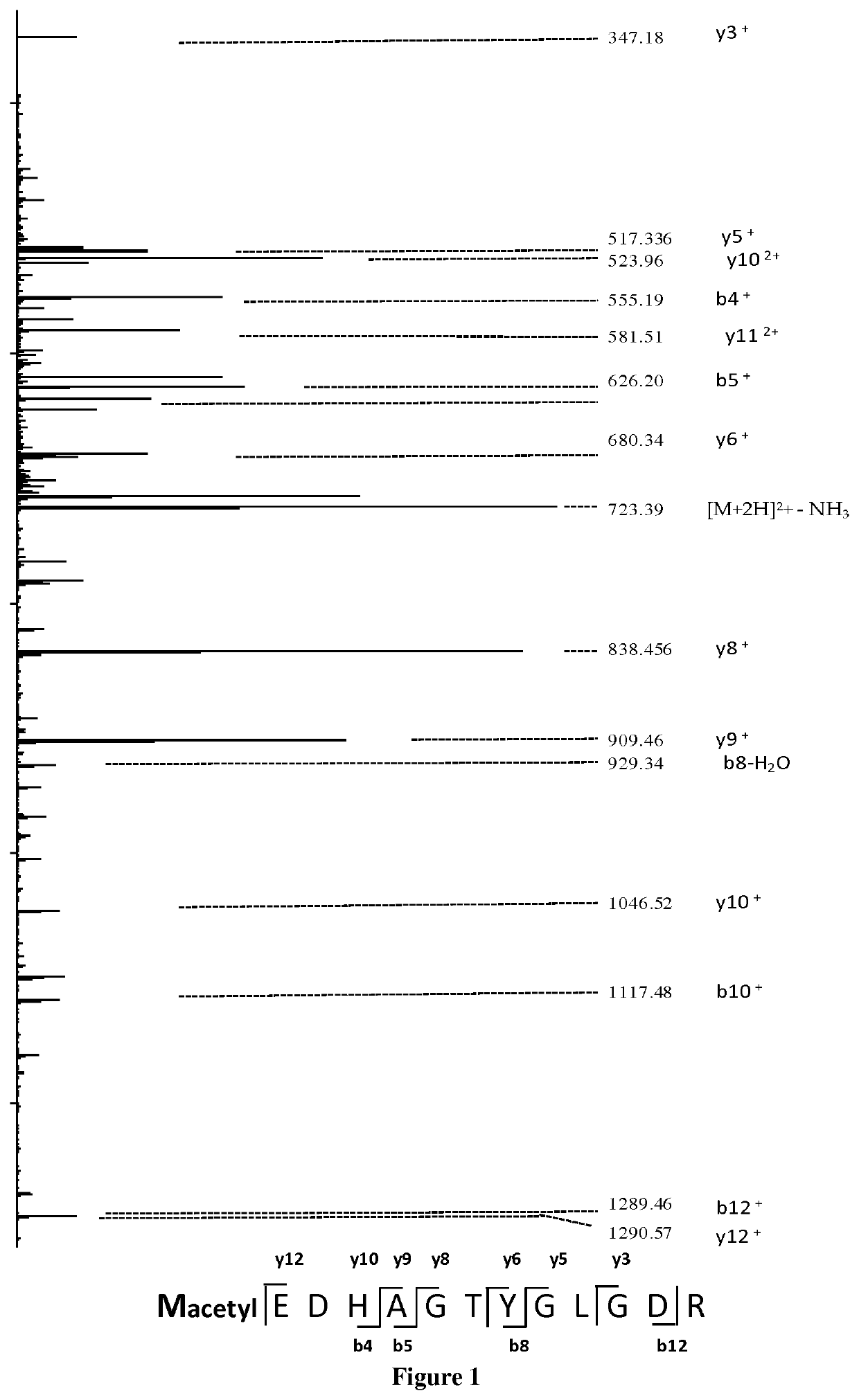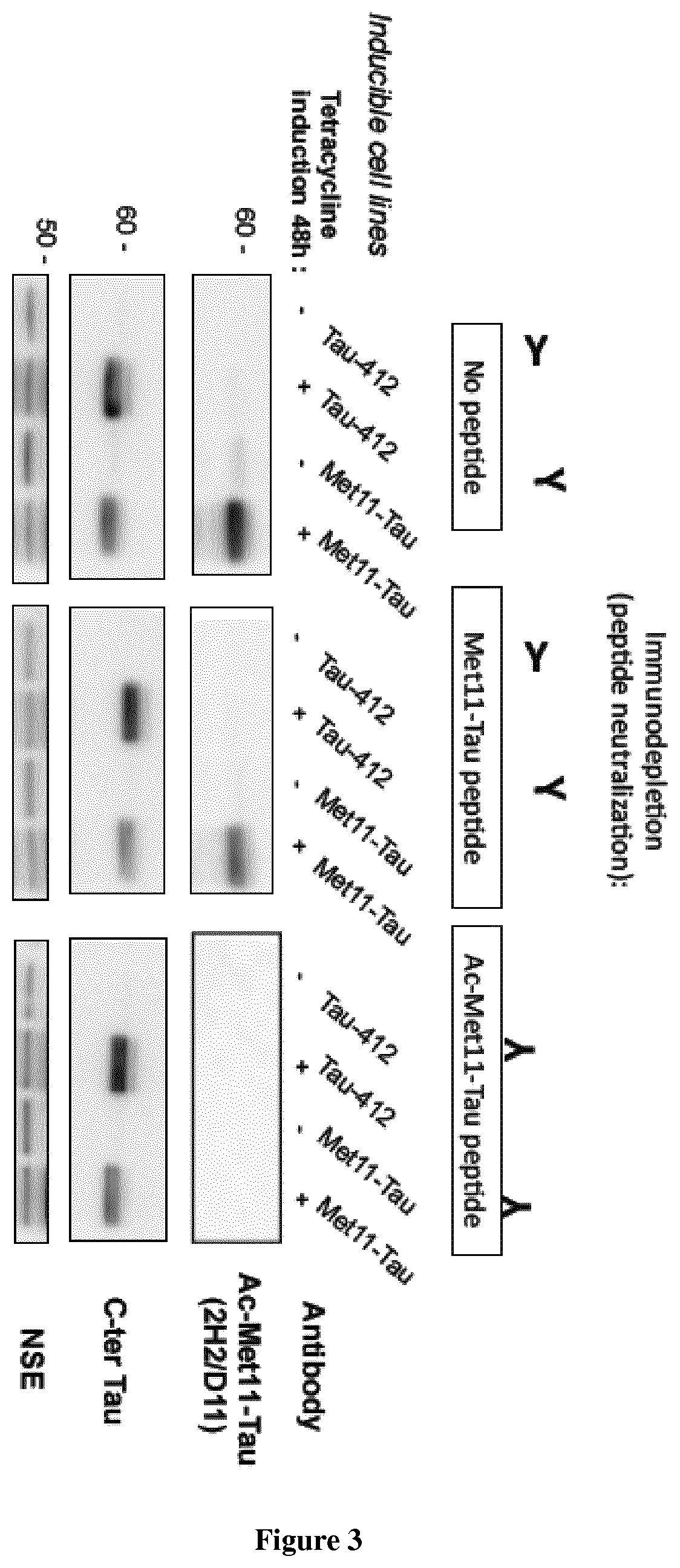New tau species
a tau species and new technology, applied in the field of new tau species, can solve the problems of care dependency and loss of autonomy, damage to patient treatment, and major public health problems, and achieve the effects of reducing the risk of diseas
- Summary
- Abstract
- Description
- Claims
- Application Information
AI Technical Summary
Benefits of technology
Problems solved by technology
Method used
Image
Examples
example 1
[0121]Materials and Methods
[0122]Human tissue samples. Human brain autopsy samples were from the Lille NeuroBank collection (Centre de Ressources Biologiques du CHU de Lille). Informed consent was obtained from all subjects. The Lille NeuroBank has been declared to the French Research Ministry by the Lille University Hospital (CHU-Lille) on Aug. 14, 2008 under the reference DC-2000-642 and fulfills the criteria defined by French Law regarding biological resources, including informed consent, ethics review committee approval and data protection. The study was approved by the ethics review committee of Lille NeuroBank. The stages of Tau pathology were categorized on the basis of neuropathological characteristics according to Braak and Braak (2011).
[0123]Identification of Ac-Met11-Tau species. Ac-Met11-Tau was identified using the experimental approaches detailed in Derisbourg et al (2015). Briefly, Tau species were enriched by immunoprecipitation from human occipital cortex brain, lab...
example 2
[0155]Materials and Methods
[0156]Indirect ELISA. Nunc 96-well microtiter plates (Maxisorp F8; Nunc, Inc.) were coated overnight at 4° C. with 100 ng / well of Tau 1-peptide (SEQ ID N° 10), Met11-Tau peptide (SEQ ID N° 9), or Ac-Met11-Tau peptide (SEQ ID N° 8) in 50 mM NaHCO3, pH 9.6. After 3 washes with PBS containing 0.05% Tween (PBS-T), plates were blocked with 0.1% casein solution (PBS) at 37° C. for 1 h, followed by incubation with 2H2 / D11 antibody, or 7C12 / E7 antibody for 1 h at 37° C. Immunodetection was performed by using a goat anti-mouse IgG horseradish peroxidase-conjugated antibody (A3673; Sigma) at 1:4000 dilution. Tetramethyl benzidine (T3405, Sigma) was the substrate. The reaction was stopped by addition of sulfuric acid, changing the color from blue to yellow. Plates were measured with a spectrophotometer (Multiskan Ascent Thermo Labsystem) at 450 nm.
[0157]Protein extractions. Human brain autopsy samples (hippocampus) were from the Lille NeuroBank collection (Centre de ...
PUM
| Property | Measurement | Unit |
|---|---|---|
| Length | aaaaa | aaaaa |
Abstract
Description
Claims
Application Information
 Login to View More
Login to View More - R&D
- Intellectual Property
- Life Sciences
- Materials
- Tech Scout
- Unparalleled Data Quality
- Higher Quality Content
- 60% Fewer Hallucinations
Browse by: Latest US Patents, China's latest patents, Technical Efficacy Thesaurus, Application Domain, Technology Topic, Popular Technical Reports.
© 2025 PatSnap. All rights reserved.Legal|Privacy policy|Modern Slavery Act Transparency Statement|Sitemap|About US| Contact US: help@patsnap.com



